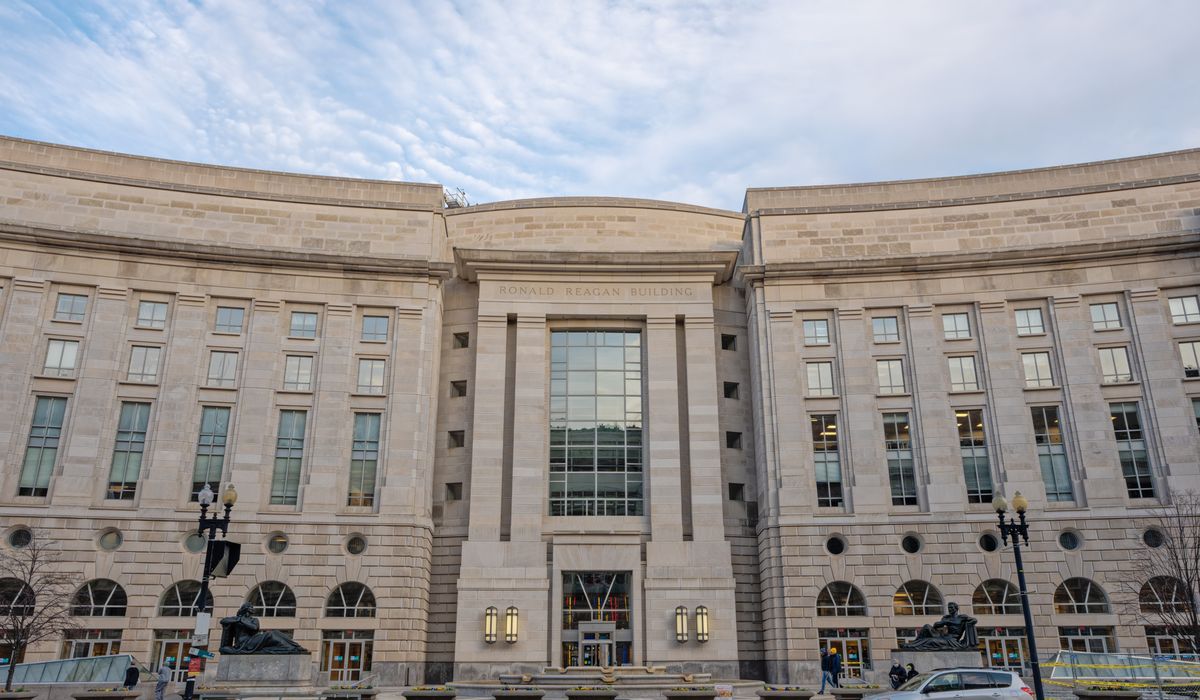


Children in federal government childcare centers were exposed to high levels of lead and copper after the pandemic because officials rushed to reopen buildings without flushing their water systems, according to a new inspector general’s report.
One child care center in Seattle had lead levels 14 times higher than the critical level. Another center in Atlanta had six times the critical level of lead in its child care center, and employees ended up taping off the drinking fountains to protect the kids in their charge.
In some federal courthouses, judges flatly refused to allow their water to be tested, saying they didn’t want people poking around their chambers.
And in the District of Columbia, the Ronald Reagan Building faced an elevated risk of spawning Legionnaire’s disease because the contractor refused to keep its water heater at 140 degrees, saying that would violate its energy-savings targets in its contract.
The findings, revealed in a report Monday, are the latest black eye for the federal response to the pandemic and its aftermath.
The inspector general said that when buildings buttoned up for the initial shutdown, water stagnated and levels of dangerous contaminants rose. When the buildings were reopened, the GSA’s Public Buildings Service often failed to meet its own rules for testing and flushing the systems.
Problems were particularly troubling for the buildings that run child care centers.
“GSA closed the majority of its child care centers during the COVID-19 pandemic. However, PBS did not test the water in many of these centers for months or years after reopening them,” the inspector general said. “Once performed, tests identified hazardous levels of lead and copper in outlets at some GSA child care centers.”
The report follows one last year that found Legionella, the bacteria that causes Legionnaire’s disease, in the water supplies of some federal buildings. Investigators again blamed water that stagnated in pipes of near-empty buildings.
The inspector general has found at least two people who contracted Legionnaire’s disease because of federal buildings.
Investigators indicated that the water quality issues go beyond the pandemic reopening.
At the Reagan Building, a massive edifice blocks from the White House, the contractor refused to increase the water heater temperature to 140 degrees, which is the level recommended by the Centers for Disease Control and Prevention to kill the Legionella bacteria. Instead, the heater was left 20 to 25 degrees lower.
“According to the [operation and maintenance] contractor, water temperature is set according to the energy efficiency requirements in its contract,” the inspector general said.
GSA even warned the contractor in an email that the water system needed to be flushed, and said they were risking an inspector general audit.
The contractor didn’t budge, saying it was impossible to flush most of the building’s faucets without disassembling the system. In November 2022, after faucets in one part of the building turned colors and had an odor, the systems were flushed.
GSA didn’t respond to an inquiry for this story but in an official response to the inspector general the agency said it’s taken action and now has an “industry-leading water quality management initiative.”
“This program goes beyond regulatory mandates to ensure workplace health and safety and addresses the drinking water quality concerns identified in the audit,” said Elliot Doomes, the public buildings commissioner.
The pandemic caught the government flat-footed, and GSA found itself having to write new rules on how to reopen buildings after long vacancies. Those included hot water temperature checks, chlorine checks and flushing the systems.
But GSA didn’t follow through with contractors to make sure they were done.
Sen. Joni Ernst, Iowa Republican, chided the GSA over the findings.
“Stagnant, hazardous water in an empty federal building paints the perfect image of our bloated bureaucracy,” she said.
Ms. Ernst has been prodding the government over its pandemic reopenings. Last year she highlighted the staggeringly low occupancy rates at dozens of federal agency headquarters in Washington, and this year she revealed employees are collecting higher D.C.-area pay while teleworking from lower-cost regions.
“Kids in daycare centers are drinking unsafe water in abandoned buildings because bureaucrats are taking bubble baths at home instead of showing up to work,” Ms. Ernst said.
Inspector General investigators heard several excuses for the water system problems.
In one courthouse a contractor was “detained” by authorities after trying to enter a judge’s chambers to test the water. Another courthouse said it didn’t have enough staff working in person to be able to assign an escort to the water testers.
Other buildings only tested some of their water outlets, saying they were able to standardize their pricing by not requiring tests of all faucets.
Contractors’ handling of water in child care centers was particularly troubling.
In Seattle, the Park Place Building’s child care center was reopened on June 25, 2022, but the water wasn’t tested until more than two years later. When it was tested, the lead level in a children’s sink was 14 times higher than the “action level” set by the Environmental Protection Agency.
Even after the testing, the sink remained in use for two more months because that’s how long it took for GSA to get the results.
The inspector general found similar problems at federal building child care centers in Atlanta and Austin, Texas.
“In sum, PBS did not follow its water outlet testing requirements for GSA child care centers. As a result, PBS placed children and employees in the child care centers at risk of exposure to elevated levels of lead and copper,” the audit concluded.
• Stephen Dinan can be reached at sdinan@washingtontimes.com.
